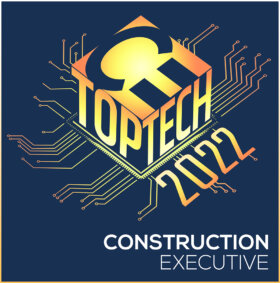CGC’s eCMS Construction Cloud ERP Recognized as a 2023 Top Product by Constructech Magazine
Scottsdale, Arizona—January 24 , 2023—Computer Guidance Corporation, the leading developer of cloud-based ERP solutions for the construction industry, announced today that eCMS Construction Cloud v.4.2 ERP has been named as a 2023 Top Product by Constructech magazine in the Trusted Products category.
We have a labor shortage that has intensified in the past few years, along with a supply-chain crisis that collapsed under the weight of the COVID-19 pandemic. Add to this material shortages and a looming economic crisis, and it has created this perfect storm for the construction industry. This is where technology enters the equation, as digital transformation is set to surge.
The challenge becomes wading through all the hype and to avoid shiny technology syndrome, which is the tendency to follow a tech trend without first weighing the potential. This is where the Constructech Top Products enter the equation—which aims to cut through all the noise to find the truly best products serving the construction industry.
“The 2023 Constructech Top Products can help improve efficiencies, minimize rework, reduce tedious and manual tasks, heighten safety, and ultimately improve the bottomline,” says Peggy Smedley, editorial director of Constructech magazine, and president of Specialty Publishing Media. “When we put a human-centric purpose at the center of process and technology amazing things can happen at the jobsite.”
Each product is entered in one of three categories: Concept (technology concepts less than three months old), New (applications in the market for less than two years), or Trusted (products on the market for at least two years, with upgrades or enhancements).
Once all the nominations were submitted, the ballots were sent to an independent panel of industry analysts and experts to vote if the product would qualify or not for this year’s Constructech Top Products.
When judging the Top Products, the judges take into consideration the backbone and core functionality of each platform, but also new functionality that will allow contractors and homebuilders to develop strategies around technology.
Many companies applied—but based on the ballot requirements—not all were able to earn the distinction.
“Computer Guidance’s aim with eCMS is to put information into the hands of stakeholders. The depth and breadth of the platform enables contractors to enhance essential backoffice functions such as accounting, payroll, job costing, human capital management, field operations, project management, and asset management,” stated Peggy Smedley, editorial director of Constructech magazine, and president of Specialty Publishing Media.
“We are proud to be recognized as a leading and trusted technology solution provider for the construction industry,” said Michael Bihlmeier, President, Computer Guidance Corporation. “eCMS facilitates the exchange of project and financial data to ensure expedited and successful project completion through realtime collaboration between operations and financial teams leveraging innovative web-based technologies. We deliver solutions that empower users to make smarter decisions anytime, anywhere.”
For more information please visit https://connectedworld.com/a-new-approach-to-a-construction-technology-tradition/.
About Computer Guidance Corporation
With over 20% of their clients represented on top ENR lists, Computer Guidance Corporation delivers the leading construction enterprise resource planning solution including financial and project management, #1 business intelligence, mobile, and enterprise content management. Scalable, customizable, and cloud-hosted, CGC serves thousands throughout North America. Computer Guidance Corporation is part of the JDM Technology Group, a global construction-specific software conglomerate that serves more than 500,000+ in 40 countries and 6 continents.


 Productive and profitable construction companies understand they need more than just a vendor for mission-critical software. That’s why industry-leading firms engage a valued partner to seamlessly integrate enterprise resource planning solutions that support their growing client and project base.
Productive and profitable construction companies understand they need more than just a vendor for mission-critical software. That’s why industry-leading firms engage a valued partner to seamlessly integrate enterprise resource planning solutions that support their growing client and project base.